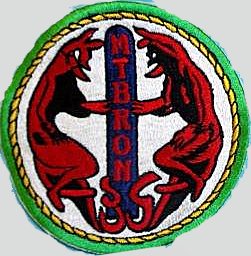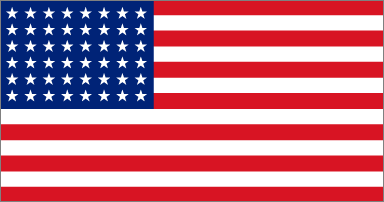NavSource Online:
Motor Torpedo Boat Photo Archive

Courtesy of Tommy Trampp
PT-510
Nan - William - Able - Roger


PT-510 served the Navies of the United States and the Soviet Union.



Specifications:
| Boat Captains | ||
| 01 | LTJG Elliott B. MacSwan, USNR - Awarded the Bronze Star | June 1944 |
|
|
Three more squadrons of PT's were sent to the Channel to join the screening forces in the invasion of Normandy, though only one of them, Squadron 34, 12 Elco boats, commanded by Lt. Allen H. Harris, USNR, was in time to take part in the operations on D-day, June 6, 1944. Squadron 34 arrived in England in May; Squadron 35, 12 Elco boats, under Lt. Comdr. Richard Davis, Jr., on June 4; and Squadron 30, 6 Higgins boats, under Lt. Robert L. Searles, USNR, on June 7. Also in June, Lieutenant Commander Bulkeley was designated a task group commander in charge of all PT operations during the invasion of Normandy.
At 1600 on D-day the PT's of Squadron 34 joined the Western Task Force Area screen, which included destroyers, destroyer escorts, PC's, and British steam gunboats. The PT's were stationed on the "Mason Line," extending 6½ miles to seaward from the beach near St. Marcouf, as an inner defense against infiltration by E-boats into the convoy unloading area. They were joined on June 7 and 8 by boats of Squadron 35, and on the 10th by those of Squadron 30. Until the end of the month, an average of 29 PT's remained on the line at all times. Boats rotated between the Mason Line and the Portland Base, usually patrolling for a week at a time, although some boats stayed on the line for as long as 3 weeks without relief. E-boats made so few attempts to penetrate the screen that PT's had no contact with enemy surface craft. In the midst of the greatest invasion in history, however, their duty was seldom dull.
In addition to the Mason Line assignment, PT's patrolled in divisions of two or three to the northwest during most of June. Toward the end of the month they began to cover the approaches to Cherbourg in the hope of catching Germans attempting to evacuate by sea, but none of these patrols was productive. On June 25 a force of American battleships, cruisers, and destroyers, bombarded Cherbourg for more than 3 hours, knocking out most of the big coastal guns. By nightfall American troops had entered the city and were fighting in the streets. That night PT's patrolling with destroyers drew fire from shore batteries on Cap de la Hague, to the west of Cherbourg, and on the evening of the 27th went right up to the Cherbourg breakwater to learn whether any enemy guns were still active.
While four other PT's patrolled offshore with the destroyer Shubrick [DD 639], Lieutenant Commander Bulkeley, in PT 510 (Lt. (jg.) Elliott B. MacSwan, USNR), with PT 521 (Lt. (jg.) Peter S. Zaley, USNR), maneuvered for 25 minutes within a quarter mile of the breakwater, at times approaching within 150 yards. Then a large-caliber battery in the harbor fort opened on the boats, dropping one explosive shell 30 feet ahead and another 20 feet behind the 521, which was following 200 yards behind the 510. The explosions stopped all three of the 521's engines, bent the throttle rods, loosened the deck planking, and jarred the port torpedo halfway out of its rack. PT 510 laid a smokescreen around the 521, whose engineers got her underway again in 5 minutes. Bulkeley ordered the 521 to launch her dangling port torpedo toward the breakwater and the boats retired, zigzagging away behind smoke. Because of the smoke and noise it was impossible to observe the effect of the torpedo on the breakwater.
"We decided then and there that that fort had not fallen," Bulkeley said, "and waited until the next day to pay our next call. This time we saw a white flag in the fort so we went right into the harbor."
While the 510 and 521 were drawing fire from the fort, Shubrick and the other four PT's continued westward toward Cap de la Hague. When they were 2½ miles off the cape, a heavy shore battery opened fire, dropping shells within 30 yards of Lt. (jg.) Stewart J. Moulin's PT 459 and 300 yards from Shubrick. The group took evasive action, with the Shubrick retiring behind a smokescreen. A few minutes later PT 457 (Lt. (jg.) Waldemar A. Tomski, USNR) observed the position of the shore guns and reported it to Shubrick. The destroyer came about through the smoke, fired a salvo, and then was forced to retire by renewed fire from shore.
Patrolling on the Mason Line continued through July without incident. Bulkeley, promoted to commander, was detached in the middle of July to take command of the destroyer Endicott [DD 495]. He was succeeded as overall commander of PT's in the Channel by Lt. Allen H. Harris, USNR. He previously had been relieved as commander of Squadron 2 by Lt. Robert R. Read, USNR. Lt. Herbert J. Sherertz, USNR, relieved Harris as commander of Squadron 34. Squadron 35 had had a change of command on June 11, when Lt. Arthur N. Barnes, USNR, relieved Lieutenant Commander Davis as squadron commander and Davis assumed command of the PT base at Portland. Lt. Ralph S. Duley, USNR, succeeded Davis as base commander in mid-July.
Admiral Kirk, his duties as Commander Western Task Force completed, wrote on July 5:
Dear BULKELEY:
As you know, I have turned over command off the beaches and at Cherbourg to Admiral Wilkes, and have withdrawn from the assault area. I cannot leave without congratulating you, and, through you, all your men, on the very fine job done by PT boats during the first month of the campaign. Your boys have fully justified our very high expectations, and if they have not had as much direct action as we had all hoped, that in itself is a tribute to the high respect the German has for them.
Whether in the Area Screen or on Advanced Patrol, or in the dull but demanding business of ferrying old men around the bay, your boys have done themselves proud. I wish you and them all the luck in
the world.
ALAN KIRK
| Back to the Main Photo Index | Back to the Patrol Craft/Gunboat/Submarine Chaser Index | Back to the Motor Torpedo Boat (PT) Photo Index |
| Comments, Suggestions, E-mail Webmaster |
|
This page created by Joseph M. Radigan and maintained by Tom Bateman |